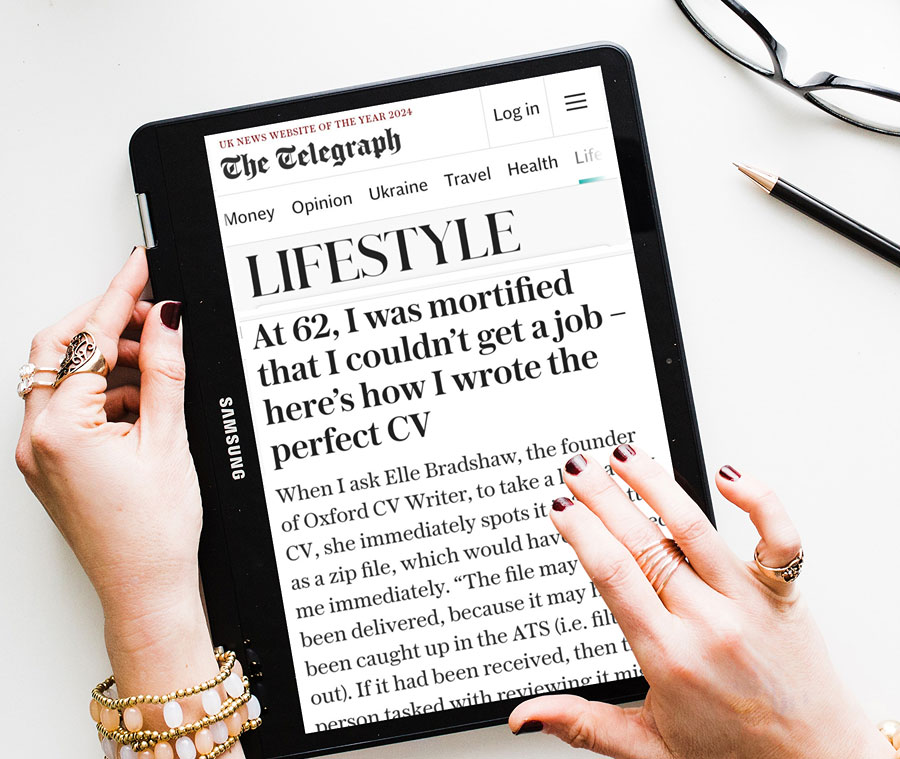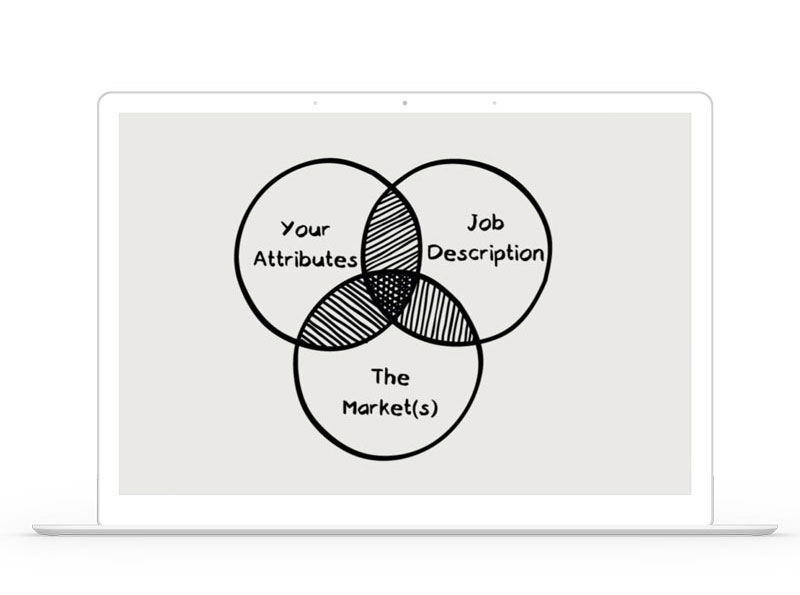Creating your CV
Back in the day, you’d email a copy of your generic CV with a slightly tweaked cover letter – as everyone did. A human would judge it and decide whether or not to short-list you for interview. Those were the days. Now, since it just takes a few taps to submit a CV, employers are bombarded with applications. Most are screened by robots called ATS. If your CV isn’t tailored to what the employer wants – their selection criteria – it’s instantly rejected, no matter how capable you may be.
What are ‘selection criteria’?
Put simply, selection criteria describe the kind of person the employer wants to hire. You might see other terms used – Job Specification, Person Specification, Position Requirements, or Competency Framework – but they all serve the same purpose.
They outline what the job involves and what the employer is looking for. This includes both the technical skills you need to do the job, and the personal qualities they believe will help someone succeed in the role.
Getting your CV past the ATS filter
Most employers now use Applicant Tracking Systems (ATS) to screen CVs and cover letters before a human ever sees them. These systems are set up to check whether your CV reflects the job’s selection criteria.
At a basic level, the software scans for keywords and phrases that match the skills, experience, and qualities the employer is after. If your CV doesn’t include these, or they’re not clear, it may be marked as irrelevant – even if you're well qualified.
But ATS platforms do more than search for words. Many use AI to assess how closely your CV aligns with the job as a whole. This includes how well your achievements, training, and past roles match what’s needed in that sector. If your CV isn't structured with this in mind, you’re likely to be rejected long before a person gets involved.
Up to 70% of CVs are rejected during the ATS screening process. ATS algorithms are designed to swiftly and reliably identify the most qualified candidates for a job, and most CVs routinely fail to match the job description, keywords or selection criteria.
Making your CV stand out from the crowd
The sequence for addressing selection criteria in an executive job application typically includes the following steps:
Simply tweaking your cover letter and submitting a standard CV won't suffice for applications nowadays. Your entire submission must align with the job's selection criteria, to pass ATS filters and get to a human.
- Don't do this - A common mistake is thinking 'standing out' means listing everything you’ve ever done. It doesn’t. Standing out means showing the employer exactly what they’re looking for – and leaving out what they’re not.
- Figure out what they really want - Start by reading the job advert carefully. Then bring together the qualifications, skills, experience, and personal qualities that match what the employer wants. This could include certificates, awards, or testimonials from past employers or colleagues.
- Tailor your CV - Use what you’ve gathered to tailor your CV to the job. Highlight your key strengths and achievements in a way that clearly shows how you meet the selection criteria..
Don't sound like a foreign robot - Ai CV writing makes you sound generic, keyword-stuffed, foreign or misaligned to the job description. I can spot it a mile off, and so can most HR people. It’s the same wording, line spacing, punctuation and it's cliche-ridden. So ironically you might be rejected for not being a real person!
~ Elle Bradshaw
TAGS: Oxford CV Writer provides CV writing services for general job seekers across the south-east of England, including CV help in Oxford, Aylesbury, Reading, Basingstoke, Bracknell, Slough, Maidenhead, Windsor, Wokingham, and Newbury. Our services include professional CV writing in Southampton and Portsmouth, tailored CVs for returning workers in Berkshire and Hampshire, and ATS-optimised CVs for job seekers in retail, hospitality, trades, healthcare, administration, and more. If you're searching for a CV writing service near me in the south-east, we offer personal support to help you return to work or secure your next job.
TAGS: ATS-friendly CV writing for general job applications, professional CV help for first-time job seekers, personalised resume writing for returning to work, keyword-optimised CVs for online job portals, CV formatting to meet employer job description, help with custom CVs for job boards like Indeed and Reed, UK-specific CV formatting and layout, expert guidance on addressing gaps in employment, entry-level job CV writing support, support for mature-age job seekers re-entering the workforce, help with online applications and document uploads, CVs for retail, admin, labouring and hospitality applicants.
Schedule an appointment
For a fifteen-minute conversation with Elle prior to purchase, please click on the telephone icon to arrange a complimentary call at a time that is mutually convenient
A word of warning
When selecting a professional CV writer to help create your CV and job application, enquire about their background. Don't assume they've lived or worked in your locality, or even the UK. Many large CV writing companies outsource CV writing to other countries, or even robots. Prepare to ask probing questions such as "where are you based?" and "do you write the CV yourself?"
Choose an experienced HR person to help create your CV
Putting together a CV and a job application takes time, experience and talent. It is not a secretarial service. Experienced CV writers know how to utilise the proper format, words and phrases to secure you an interview. If you can't do it yourself, consider hiring a CV writer who has done it many times before.
My CV building process
-
Review of selection criteria
A detailed examination of the employer's specific criteria to ensure your application aligns precisely with their expectations.
-
Discussion about potential employer
We consider the employer's culture, market situation, and broader industry factors to see how their situation may influence their decision.
-
Personal attributes 'gap' analysis
We honestly assess how well your qualities match the employer's needs, then focus on highlighting your strengths and downplaying any weaknesses.
-
Initial CV build
We build the first draft of your CV, highlighting your achievements and experience to portray you as the ideal fit for the job.
-
Review and Refinement
Rigorous refinement of your CV ensures it presents a compelling narrative that aligns as closely as possible with the employer's wants.
-
Preparation of supporting documents and social media profile
Only then do we then prepare any necessary supporting documents and - where required - optimise your social media profile for a consistent professional image.
-
Application
Finally, we help you submit your carefully crafted application, maximising your chances of securing an interview.
-
I'm here to help you do well - giving you honest advice on how to make your CV better. If we're not aiming for one job in particular, I'll use what jobs generally look for to make your CV appeal to more employers. But remember, a CV made just for one job works best.
An example of a cover letter that aligns a candidate's application with an employer's needs
Dear [Hiring Manager's Name],
I am writing to apply for the [Position Name] role advertised on [where you found the job posting]. With experience in [briefly state type of work, e.g. customer service, administration, or warehouse operations] and a strong work ethic, I am keen to contribute to [Company Name].
In my previous role as [Your Last Position], I gained valuable experience in [state key duties, e.g. handling customers, working to deadlines, or keeping accurate records]. This helped me develop skills in [list two or three relevant skills], which I believe are directly useful for this position.
I am particularly interested in working at [Company Name] because of its reputation for [state something simple, e.g. good customer service, teamwork, or reliability]. I feel my background in [specific area of work] makes me a strong match for the role and your team.
I would welcome the chance to bring my skills and enthusiasm to [Company Name] and support your ongoing success. Thank you for considering my application. I am available for interview at your convenience and can be contacted on [your phone number] or by email at [your email address].
Yours [Faithfully/Sincerely],
[Your Name]

Elle Bradshaw in a The Daily Telegraph article by Liz Hoggard.
Why I'm a prime choice
CV Writing & Advice
Hello, I'm Elle. I personally take charge of every project, ensuring no aspect of your CV creation is passed off to CV mills, bots, contractors, or juniors. With over fifteen years in a recruitment agency, specialising in both recruitment and CV optimisation, I've seen the spectrum of application missteps and successes.
Given the 'ocean of ordinariness' I see in the current wave of poorly tailored, inartfully GPT'd executive CVs, it helps that I am a qualified marketer, author, and seasoned HR consultant.
My passion has always been creative writing and puzzle-solving. This blend of science, data, language, and originality is ideal for advanced job applications: understanding employer needs, matching skills, knowledge, cultural nuances, and experience to those needs, and presenting a compelling proposition.
Prefer to chat first? Phone me: 07537-133-488, Txt me: 07537-133-488 , Facebook me, or Whatsapp me.
Please complete this form to outline your needs and schedule a 15-minute chat to discuss your needs. I will respond with available time and date options.
Hitting the sweet spot with your CV

Selection criteria may not be explicitly stated in a job description, but addressing them is crucial if you are to align your application to the employer's needs, requirements, and circumstances.
- Your attributes: The first circle represents your (the applicant's) knowledge, achievements, and skills
- Job description: The second circle represents the employer's strategic and operational needs in filling the post
- The market: The third circle represents the broader trends and challenges facing the employer's industry
This succinctly illustrates why each senior executive CV and its accompanying documentation must be tailored to an employer's requirements, needs, and situation. Venn and the art of the CV (Bradshaw, Edwards 2022).
CV alignment with selection criteria
-
Begin with the employer's needs.
This vital process entails deeply considering the employer's selection criteria. Understanding their demands allows us to precisely tailor your application to meet their expectations.
-
Your attributes versus their needs.
We evaluate how your qualities, experience, and achievements align with the employer's selection criteria. This review guides our approach to accentuate your strengths and address or downplay any weaknesses, ensuring your application is best positioned.
-
Starting Your CV
The groundwork of your application is laid here with the creation of your CV's first draft. Utilising insights from earlier steps, we showcase your achievements, skills, and experience in a pitch crafted for the role.
-
CV review and refinement
Next, we carefully review and enhance your CV, focusing on crafting a narrative that aligns closely with the employer's requirements. Each aspect is examined to ensure optimal alignment and a compelling pitch.
-
Supporting documents and social media.
We prepare requested supporting materials like cover letters and answers to questions. We also create or fine-tune your social media presence to ensure it reflects a consistent and professional image, further supporting your application.
-
Application submission.
This final phase is where you submit the carefully curated and error-free application to the potential employer, ensuring it adheres to all specifications. This is designed to maximise your likelihood of being called for an interview.
-
This approach aims to boost your success in securing interviews by aligning your profile with employer expectations and weaving a persuasive story of your skills and experience.
Aligning your CV
Tailor your CV to the prospective employer's specific needs and demonstrate how your accomplishments align with their requirements. Providing concrete examples with metrics strengthens your case and enhances your chances of securing an interview.
- Your attributes: The first circle represents your (the applicant's) knowledge, achievements, and skills
- Job description: The second circle represents the employer's strategic and operational needs in filling the post
- The market: The third circle represents the broader trends and challenges facing the employer's industry


